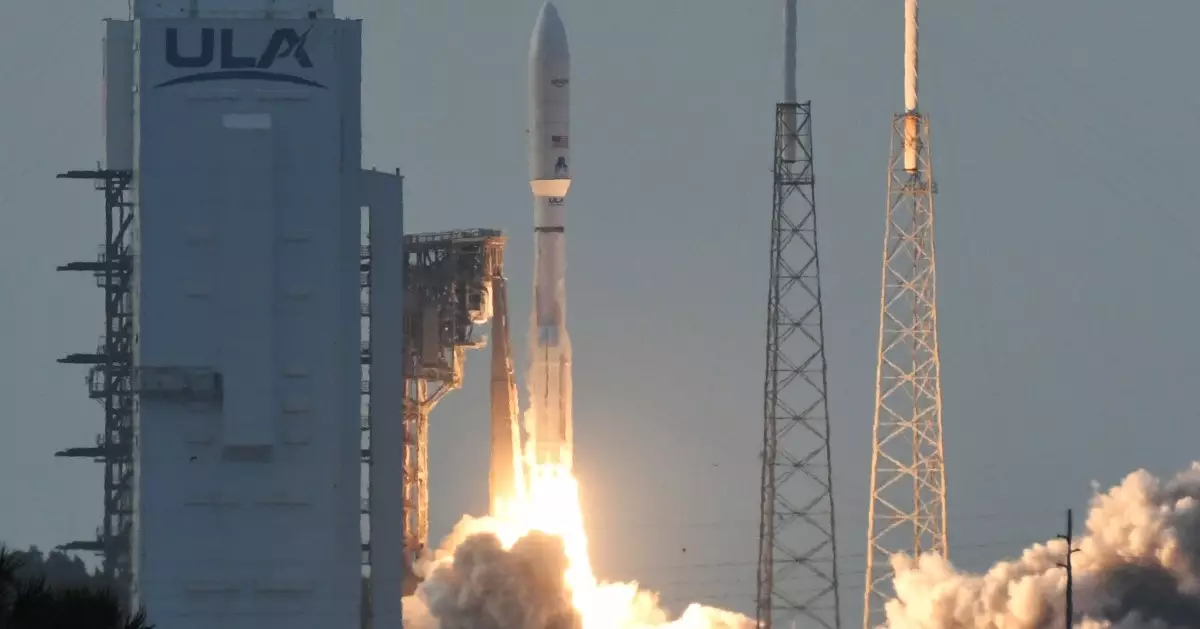In a world increasingly reliant on digital connectivity, the launch of Amazon’s Project Kuiper marks a significant milestone in the race for satellite internet supremacy. The recent deployment of the first 27 satellites out of 3,236 planned is not merely a logistical achievement; it symbolizes Amazon’s earnest entry into the competitive landscape dominated by SpaceX’s Starlink. As tech titans vie for dominance in low-Earth orbit, the implications for global internet access—particularly in underserved areas—could be transformative.
Amazon’s endeavor to launch Project Kuiper was officially announced in 2019, but the urgency has grown significantly with the Federal Communications Commission (FCC) mandating that at least 1,618 satellites be operational by mid-2026. This deadline is a clear response to SpaceX’s overwhelming advantage, as Starlink has already launched over 7,200 satellites. The ambitious scale of Project Kuiper reflects not just commercial interest but also a strategic imperative to reshape the internet landscape.
The Launch: A Testament to Innovation
The launch of these satellites, executed using the United Launch Alliance’s Atlas V rocket, is a testament to the complexities and challenges of space technology. Originally scheduled for April 9th, the launch was postponed due to adverse weather conditions, highlighting the unpredictable nature of space missions. However, the successful deployment on April 28th at Cape Canaveral Space Force Station serves as a reminder of the technical ingenuity and relentless pursuit of progress found within aerospace engineering. Amazon’s CEO, Andy Jassy, remarked on the achievement as the fruit of considerable innovation and teamwork, underscoring the collaborative spirit necessary for such endeavors.
These 27 satellites are positioned approximately 280 miles above Earth and have reportedly begun communicating with ground infrastructure. This operational confirmation is crucial as it sets the stage for delivering high-speed, low-latency internet services. The possibilities for consumers seem vast, especially in remote areas where traditional internet service providers often fall short.
Challenging the Status Quo
The significance of Project Kuiper extends far beyond Amazon’s corporate interests; it represents a pivotal challenge to established norms in satellite communications. For many, the internet is no longer a luxury but a necessity, and improving access is paramount. While Starlink has established a formidable foothold, the burgeoning constellation from Amazon presents an alternative that could foster new competition, lower prices, and enhanced services for consumers.
However, this competitive landscape raises important questions about the sustainability and environmental impact of an increasingly congested low-Earth orbit. Recently, debates surrounding space debris and the ethical considerations of launching thousands of satellites have gained momentum. With over 4,000 satellites planned for various projects, experts are voicing concerns about the potential for collisions and the consequences of rendering orbital space hazardous. As Amazon embarks on this ambitious venture, it must not only focus on the commercial aspects but also prioritize responsible stewardship of space.
The Road Ahead: Ambition Meets Reality
The bold vision of Project Kuiper comes with substantial financial backing—reportedly $10 billion. Nevertheless, the ultimate success of the initiative hinges on its ability to execute plans while navigating the myriad of technical, regulatory, and market challenges that lie ahead. For instance, while the FCC’s deadlines press forward, Amazon must ensure reliability and affordability in its internet service to compete effectively against a well-established rival like SpaceX.
Additionally, mixed receptions to satellite internet services, notably concerning latency and service quality, could pose challenges for Project Kuiper’s adoption. As companies aim to push technological boundaries, the expectation is not only for competitive pricing but also for a seamless user experience across varied geographies.
The ambitious nature of Project Kuiper illustrates the intersection of technology and society, wherein private companies are poised to redefine how individuals connect to the digital world. As Amazon steps onto the stage alongside formidable competitors, it raises the stakes for connectivity in our increasingly digital age. With a bright future ahead, only time will tell how these efforts will reshape the landscape of satellite internet and global communications.

